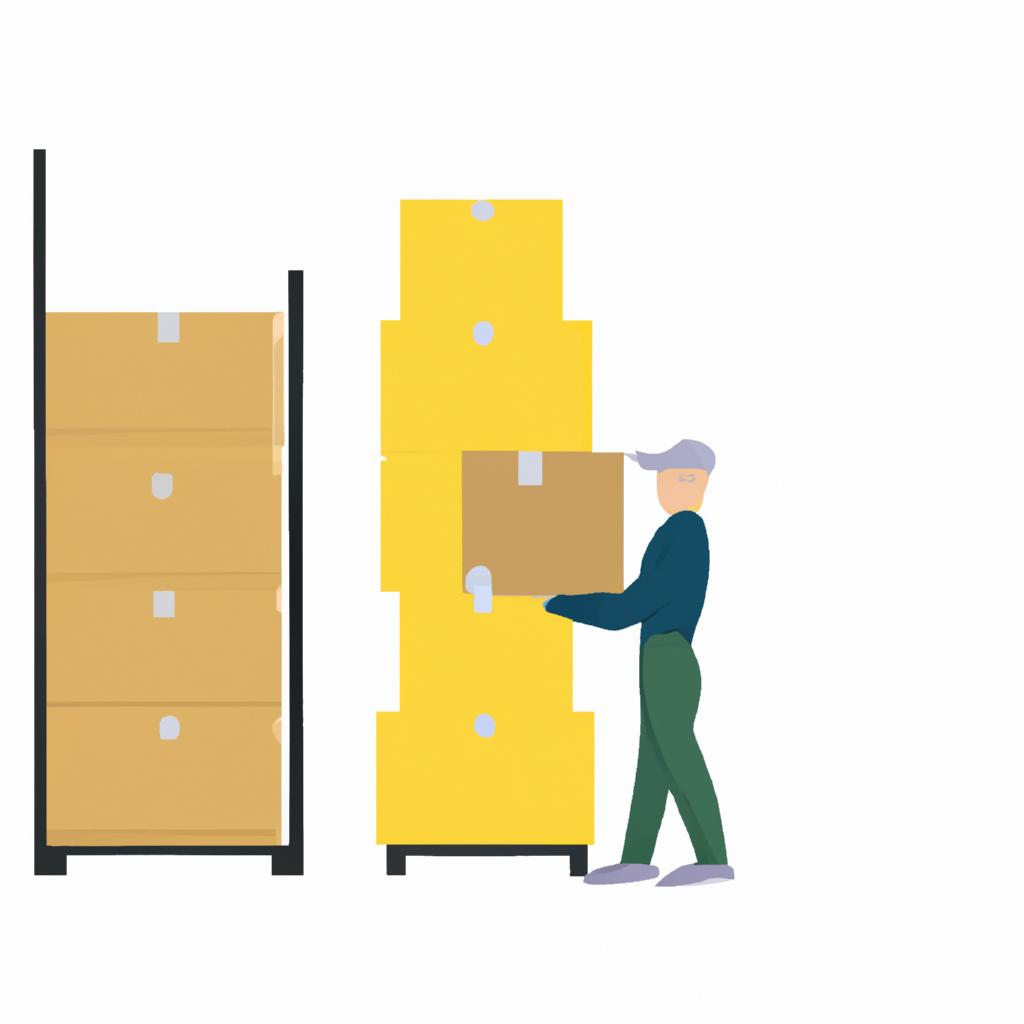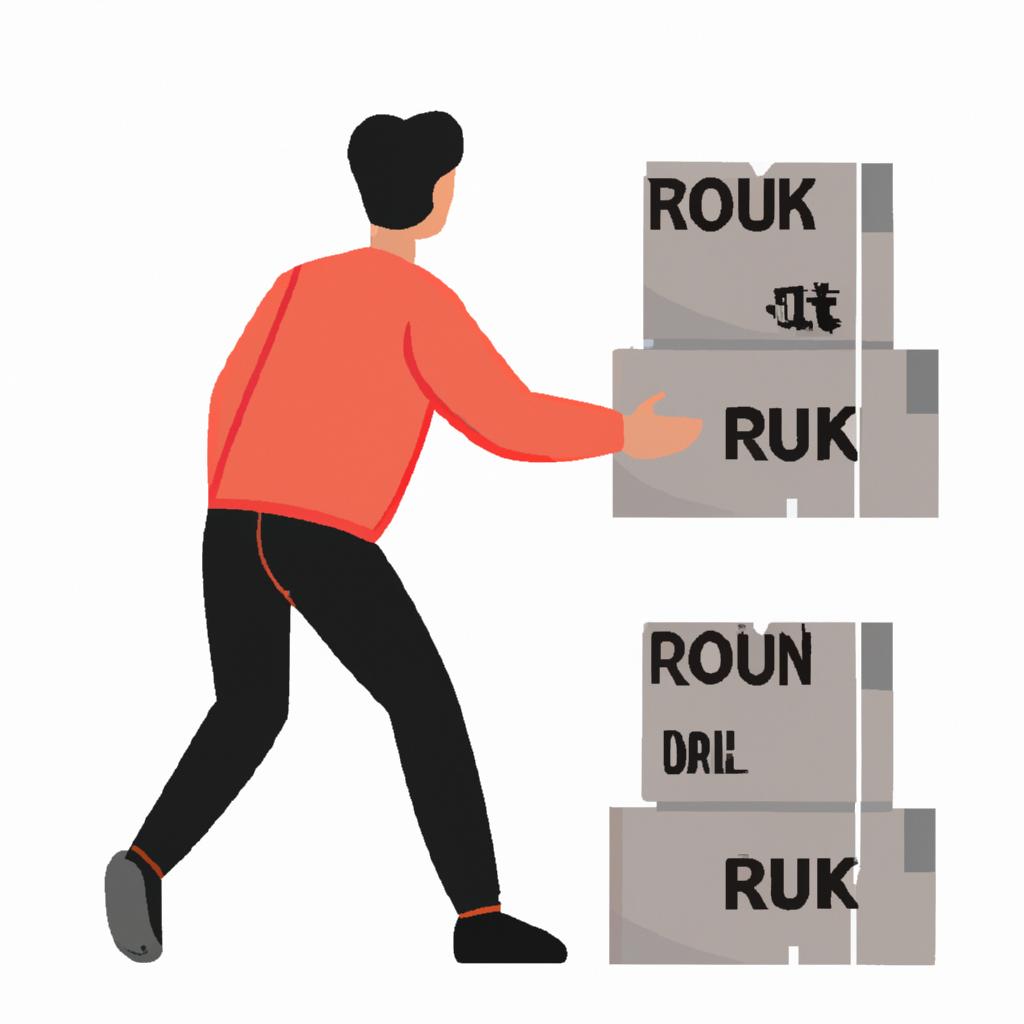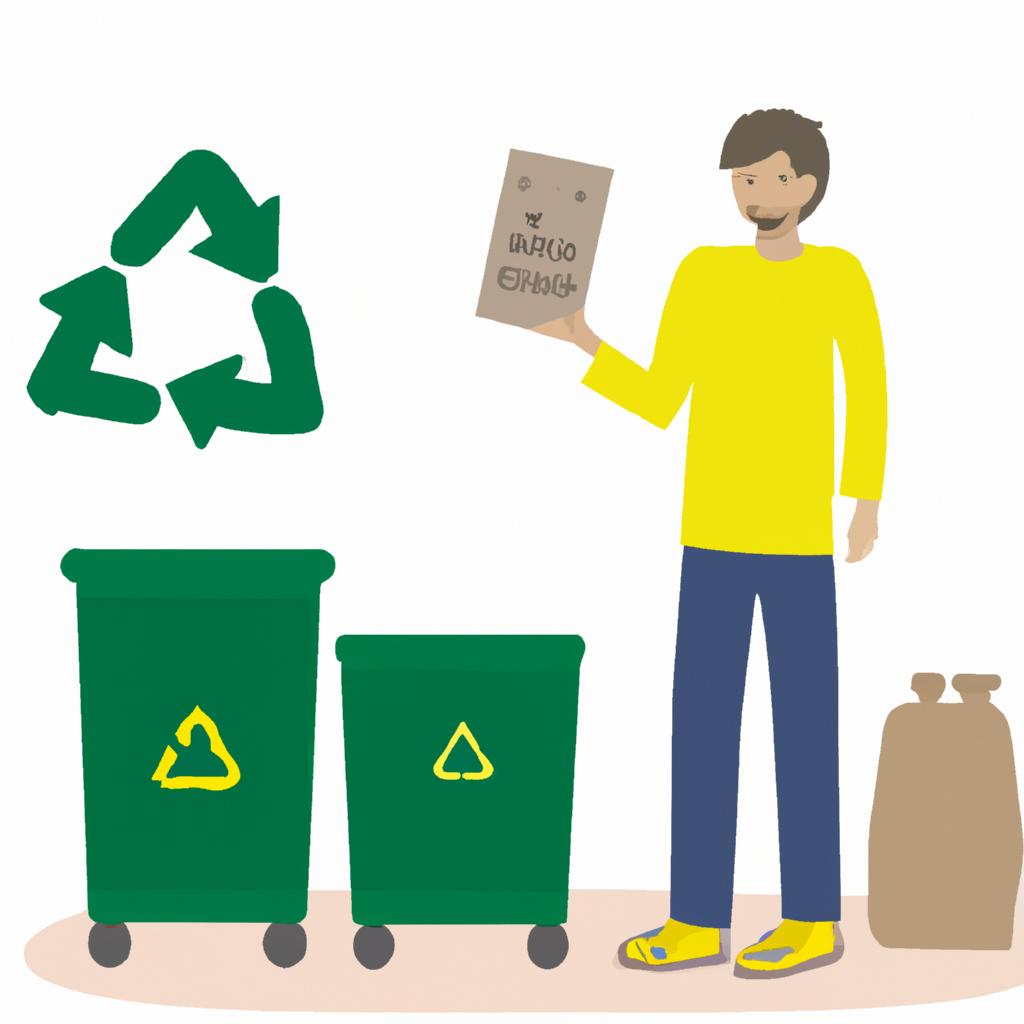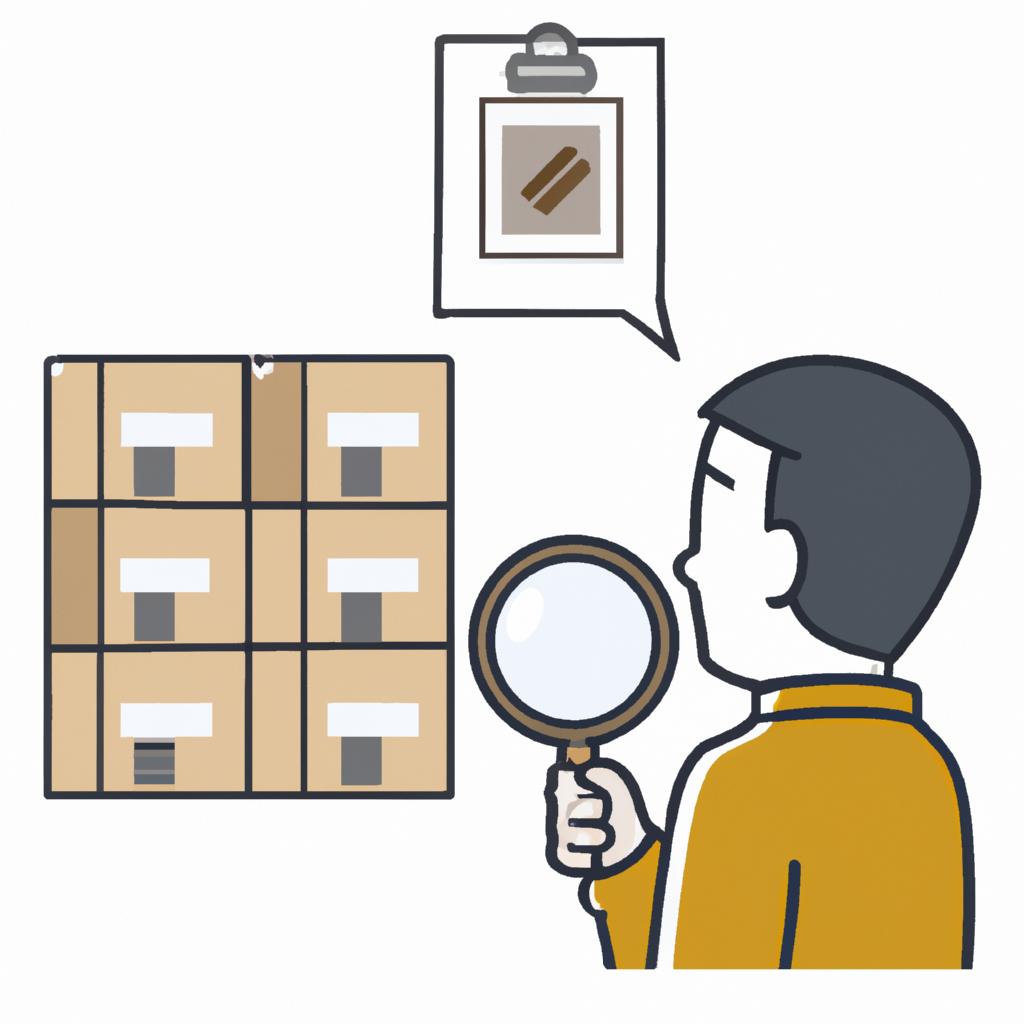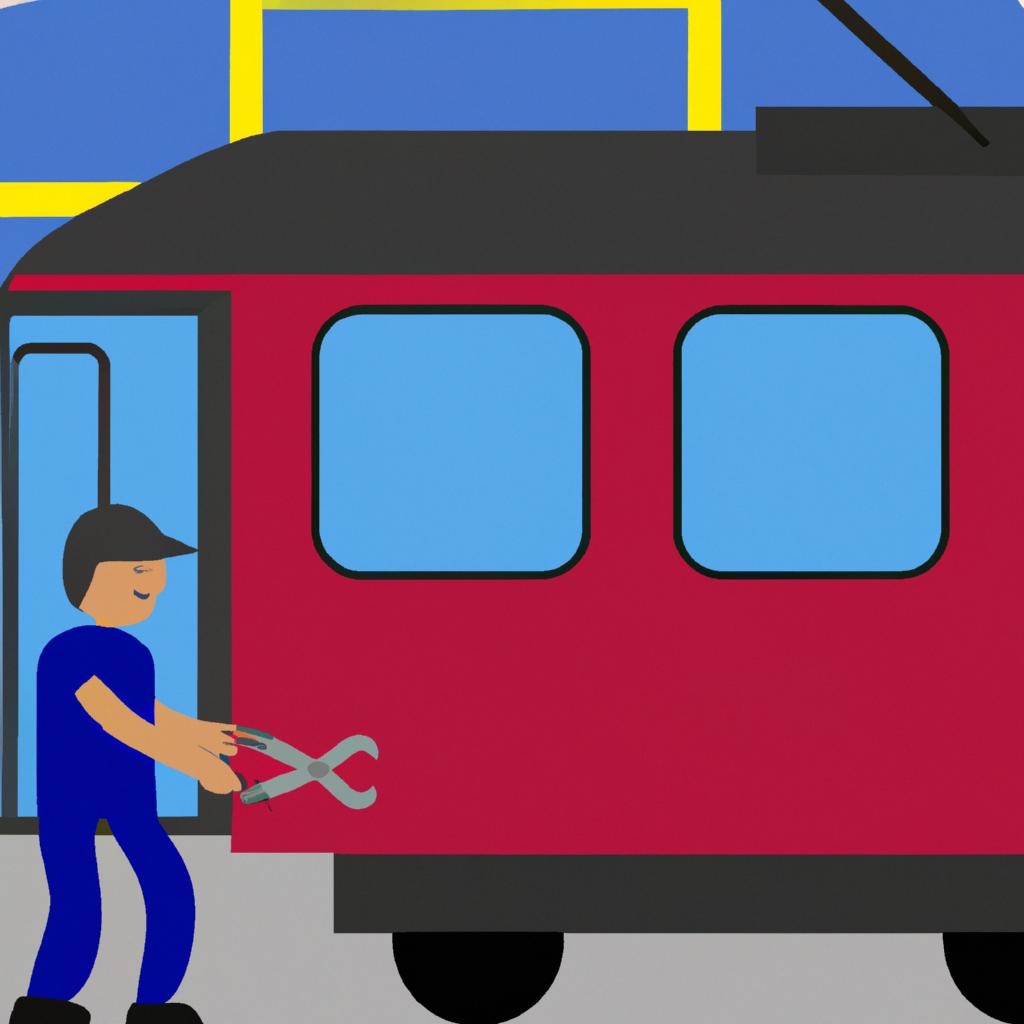Product Returns in Transportation and Logistics: Unveiling the Mechanics of Reverse Logistics


The efficient management of product returns is crucial in the transportation and logistics sector. Reverse logistics, which involves the process of moving products from their final destination back to their origin or a designated location for repair, recycling, or disposal, plays a significant role in minimizing costs and maximizing value within supply chains. For instance, consider an electronics manufacturer that experiences a high rate of customer returns due to defective products. By implementing effective reverse logistics operations, such as timely collection of returned items, accurate assessment of their condition, and appropriate disposition strategies (e.g., refurbishment or proper disposal), the company can reduce financial losses while enhancing customer satisfaction.
Understanding the mechanics behind reverse logistics is essential for both businesses and consumers alike. This article aims to delve into the various aspects involved in product returns in transportation and logistics by unraveling the complexities of reverse logistics processes. It will explore key components such as return authorization procedures, transportation networks for returning goods, warehousing facilities for handling returned items, and decision-making frameworks for determining optimal disposition strategies based on factors like product condition and market demand. Through this examination, readers will gain insights into how organizations can effectively manage product returns to minimize costs and environmental impact while maintaining customer trust and loyalty.
Defining Product Returns in the Transportation and Logistics Industry
Defining Product Returns in the Transportation and Logistics Industry
Product returns play a significant role in the transportation and logistics industry, encompassing a range of activities involved in the reverse flow of goods from customers or retailers back to manufacturers or suppliers. To better understand the mechanics of reverse logistics, let us consider an example: imagine a customer purchasing a new laptop online but discovering upon delivery that it is damaged. In this case, the customer would initiate a return process to send the product back to the retailer who, in turn, will coordinate with the manufacturer for replacement or repair.
The complexity of managing product returns necessitates defining key terms within the context of transportation and logistics. Firstly, return management involves handling all aspects related to product returns, such as authorization, tracking, disposition decisions (repairing, refurbishing, recycling), and final settlement. Secondly, reverse supply chain refers to the entire network and processes involved in managing returned products until their disposal or reintroduction into inventory. Lastly, reverse logistics includes planning and executing these activities effectively while minimizing costs and maximizing value recovery.
Understanding the significance of product returns requires acknowledging their impact on both organizations’ financial performance and customers’ satisfaction levels. Consider the following bullet points:
- Increased Costs: The transportation and storage expenses associated with returning products can significantly strain companies’ budgets.
- Operational Challenges: Managing complex documentation requirements along with coordinating multiple stakeholders across different locations presents operational hurdles.
- Customer Dissatisfaction: Poorly managed returns may lead to dissatisfied customers due to delays in processing time or inadequate communication.
- Environmental Impact: Mismanagement of returned products can contribute to waste generation and environmental degradation.
To further illustrate these challenges quantitatively, we present a table showcasing statistics related to product returns:
| Key Metrics | Statistics |
|---|---|
| Average Return Rate | 10% |
| Cost per Return | $20 |
| Percentage of Returns Resulting in Disposal | 30% |
| Average Time to Process a Return | 7 days |
Understanding the implications of product returns on financials, operations, customer satisfaction, and the environment emphasizes the need for efficient reverse supply chains. In the subsequent section, we will explore how optimizing these processes can mitigate challenges and yield positive outcomes for organizations involved.
The Importance of Efficient Reverse Supply Chains
Defining Product Returns in the Transportation and Logistics Industry
In the previous section, we explored the concept of product returns within the transportation and logistics industry. To further understand the mechanics of reverse logistics, let us delve into the various aspects that define these returns.
Imagine a scenario where an online retailer receives a significant number of returned items due to customer dissatisfaction or damaged goods during transit. This example highlights the need for efficient processes to handle such returns effectively.
To better comprehend product returns, it is essential to consider several key factors:
-
Reasons for Return: Understanding why customers return products can provide valuable insights into improving future services and reducing return rates. Common reasons include defective products, incorrect sizing or specifications, delivery delays, or simply changed preferences.
-
Reverse Supply Chain Operations: Once a product is returned, it undergoes a series of operations known as reverse supply chain management. This process involves activities like sorting, refurbishing, repackaging, reselling or disposing of returned items efficiently.
-
Cost Implications: Dealing with product returns incurs additional costs for companies operating in the transportation and logistics sector. Costs may arise from handling fees, restocking expenses, shipping charges, repairs or replacements required before resale.
-
Customer Experience Management: The way organizations handle product returns plays a vital role in shaping customer satisfaction levels and their overall experience with a brand. Providing hassle-free return policies coupled with prompt refunds or exchanges fosters trust and loyalty among consumers.
To illustrate how these factors interrelate in practice, consider this table showcasing data on product returns at different stages of the supply chain:
| Stage | Percentage of Returns | Most Common Reason |
|---|---|---|
| Warehousing | 30% | Incorrect Item |
| Transit | 15% | Damaged Goods |
| Retail Outlets | 45% | Changed Preferences |
| End Customers | 10% | Manufacturing Defects |
As we can see, understanding the reasons behind returns at each stage allows businesses to identify areas for improvement and implement targeted strategies to reduce return rates. By focusing on enhancing the reverse supply chain operations and customer experience management, companies can effectively manage product returns in transportation and logistics.
In the next section, we will explore the challenges faced by organizations when handling product returns without compromising their efficiency or profitability. Understanding these obstacles is crucial for devising effective solutions that ensure seamless reverse logistics processes.
Common Challenges Faced in Handling Product Returns
Section: The Mechanics of Reverse Logistics in Product Returns
In order to fully understand the mechanics of reverse logistics in product returns, it is important to delve into the intricacies involved. Let us consider a hypothetical case study of an e-commerce company that specializes in selling electronics such as smartphones and laptops. When customers initiate a return request for a faulty or damaged device, the process of reverse logistics begins.
The first step in this process is the evaluation and categorization of returned products. Each item goes through thorough inspection to determine whether it can be repaired, refurbished, resold at a discounted price, or needs to be disposed of responsibly. This stage sets the foundation for subsequent actions and decisions regarding each individual product.
Once the returned items have been categorized appropriately, they are then subjected to either repair or refurbishment processes. Skilled technicians assess and diagnose the issues with the products before carrying out necessary repairs or upgrades. For example, if a smartphone’s screen is cracked but all other functionalities remain intact, it may undergo screen replacement to restore its functionality.
After repairs or refurbishments have been completed, there comes the crucial task of restocking these products back into inventory. This involves updating relevant databases with accurate information about their condition and availability. Additionally, proper packaging and labeling play a vital role in ensuring efficient storage and retrieval during future sales transactions.
To evoke an emotional response from our audience towards the importance of streamlined reverse logistics processes, consider the following bullet points:
- Minimizing waste by maximizing reuse potential
- Reducing environmental impact through responsible disposal practices
- Enhancing customer satisfaction by swiftly addressing return requests
- Optimizing resource allocation by efficiently managing returned inventory
Now let us take a look at how these steps translate into practical applications within reverse logistics management through this table:
| Steps | Key Activities | Importance |
|---|---|---|
| Evaluation | Inspection and categorization | Accurate assessment of product condition |
| Repair/Refurbish | Diagnosis, repair, and refurbishment | Restoring functionality or improving product quality |
| Inventory Restock | Updating databases and packaging | Efficient storage and retrieval for future sales |
With an understanding of the mechanics involved in reverse logistics, we can now explore strategies for streamlining these processes. By optimizing each step, businesses can effectively manage returns while minimizing costs and maximizing customer satisfaction.
Transition to the subsequent section: Now that we have examined the mechanics of reverse logistics in product returns, let us delve into strategies for streamlining these processes.
Strategies for Streamlining Reverse Logistics Processes
Handling product returns in transportation and logistics can be a complex process that requires careful management of reverse logistics. In the previous section, we discussed the common challenges faced in handling product returns. Now, let us explore strategies for streamlining these processes to improve efficiency and customer satisfaction.
One effective strategy is to establish clear policies and procedures for product returns. By clearly communicating return guidelines to customers, including information on acceptable reasons for returns, required documentation, and timeframes for returning products, companies can minimize confusion and ensure consistent handling of returns. For example, consider a case study where an e-commerce company implements a user-friendly online portal for customers to initiate return requests. This streamlined approach not only simplifies the return process but also provides valuable data for analyzing trends and identifying areas for improvement.
Another crucial aspect of efficient reverse logistics is optimizing warehouse operations. Implementing proper sorting mechanisms upon receiving returned products helps categorize items based on their condition, allowing companies to determine whether they can be resold or need further inspection. Additionally, having dedicated storage areas for returned goods facilitates easy retrieval when needed while preventing mix-ups with new inventory. To illustrate this point further, consider the following bullet points that highlight key benefits of optimizing warehouse operations:
- Reduced processing time
- Improved accuracy in inventory tracking
- Enhanced visibility into stock levels
- Minimized risk of damage or loss
Furthermore, utilizing technology solutions can significantly streamline product returns processes. Digital platforms that integrate all stages of reverse logistics – from initiating a return request to final disposition – help automate tasks such as generating shipping labels, tracking packages, and issuing refunds or replacements. These technologies eliminate manual errors and provide real-time updates throughout the entire process. A table below demonstrates how implementing technology solutions contributes to improved efficiency:
| Benefits of Technology Solutions |
|---|
| Increased speed |
| Seamless integration |
In conclusion, streamlining reverse logistics processes in transportation and logistics is vital for optimizing efficiency and ensuring customer satisfaction. By establishing clear return policies, optimizing warehouse operations, and implementing technology solutions, companies can effectively manage product returns while minimizing costs and enhancing operational effectiveness. In the next section, we will explore the importance of implementing technology solutions for improved product returns without disrupting existing operations.
Implementing Technology Solutions for Improved Product Returns
Section H2: Implementing Technology Solutions for Improved Product Returns
In the pursuit of streamlining reverse logistics processes, implementing technology solutions plays a crucial role. By leveraging technological advancements, organizations can enhance efficiency, accuracy, and visibility throughout the product returns journey. To illustrate this point, let us consider a hypothetical case study involving an e-commerce company that specializes in selling electronic gadgets.
The e-commerce company identified several areas where technology could be utilized to improve their product returns process. First and foremost, they implemented a robust customer portal that allowed customers to initiate return requests online. This not only simplified the returns initiation process but also provided real-time updates on the status of their return.
Furthermore, the company integrated barcode scanning systems into their warehouse operations. With this technology in place, each returned item was quickly scanned upon arrival, facilitating automated sorting and routing based on predefined criteria such as condition or reason for return. As a result, items were efficiently directed to either refurbishment centers or disposal facilities without unnecessary delays.
To evoke an emotional response from both consumers and businesses alike towards adopting these technological solutions for improved product returns management:
- Reduced manual handling errors leading to enhanced customer satisfaction
- Quicker processing times resulting in faster refunds or replacements
- Optimal utilization of resources minimizing waste and environmental impact
- Enhanced data analytics enabling proactive identification of recurring issues
| Key Benefits |
|---|
| Increased operational efficiency |
| Enhanced customer experience |
| Cost savings |
| Environmental sustainability |
Implementing technology solutions not only addresses specific pain points within the product returns process but also offers numerous benefits across various dimensions. The aforementioned case study highlights how integrating technologies like customer portals and barcode scanning systems can revolutionize the way organizations handle product returns.
Transitioning seamlessly into the subsequent section about "Measuring Success: Key Metrics for Evaluating Reverse Logistics Performance," organizations must not only implement technology solutions but also establish metrics to assess their effectiveness. By examining these key performance indicators, businesses can gauge the impact of their reverse logistics strategies and make informed decisions to further optimize their operations.
Measuring Success: Key Metrics for Evaluating Reverse Logistics Performance
Section: ‘Measuring Success: Key Metrics for Evaluating Reverse Logistics Performance’
Transition from previous section H2: With the implementation of technology solutions to streamline product returns in transportation and logistics, it becomes essential to measure the success of these efforts. By assessing key metrics, organizations can gain valuable insights into their reverse logistics performance and make informed decisions regarding process improvements.
One real-life example that highlights the significance of measuring success in reverse logistics is the case of a global e-commerce company. This company recently implemented advanced tracking systems and automated return processing software to enhance their product returns management. Through rigorous measurement and analysis, they discovered several areas for improvement, such as reducing return cycle time and increasing customer satisfaction rates.
To effectively evaluate reverse logistics performance, organizations should consider monitoring the following metrics:
- Return Rate: The percentage of products returned out of total units sold provides an indication of customer dissatisfaction or potential issues with product quality.
- Return Processing Time: The average time taken to complete the entire return process, including receiving, inspecting, repairing (if applicable), and restocking items back into inventory.
- Cost per Return: Calculating the cost incurred per returned item enables companies to identify any inefficiencies within their reverse logistics operations and implement cost-saving measures.
- Net Promoter Score (NPS): A metric that gauges customer loyalty by asking customers how likely they are to recommend a brand or its services. NPS helps assess overall customer experience during the returns process.
Table showcasing sample data on these key metrics:
| Metric | Calculation | Ideal Value Range |
|---|---|---|
| Return Rate | Total Returns / Units Sold | Lower is better |
| Return Processing Time | Average Time for Complete Process | Shorter is better |
| Cost per Return | Total Costs Incurred / Returned Items | Lower is better |
| Net Promoter Score (NPS) | Percentage of Promoters – Percentage of Detractors | Higher is better |
By consistently monitoring and analyzing these metrics, organizations gain valuable insights into the effectiveness of their reverse logistics processes. These measurements enable proactive decision-making to improve customer satisfaction, reduce costs, and enhance overall operational efficiency.
In conclusion, evaluating key metrics for assessing reverse logistics performance plays a crucial role in driving success within transportation and logistics operations. By utilizing real-time data and analytics, companies can identify areas for improvement and implement targeted strategies to optimize their product returns management systems.

